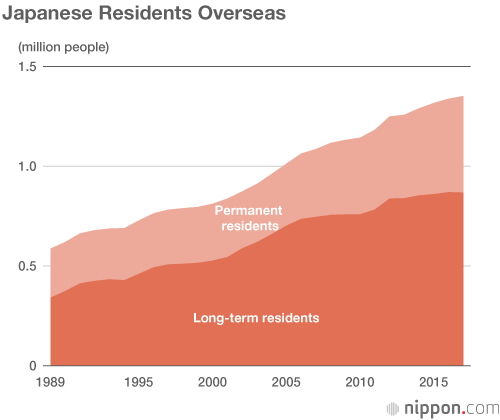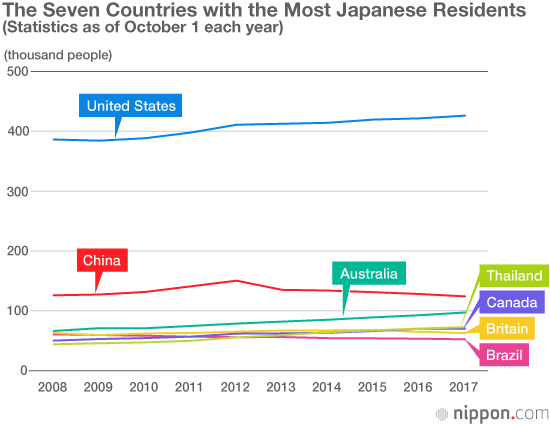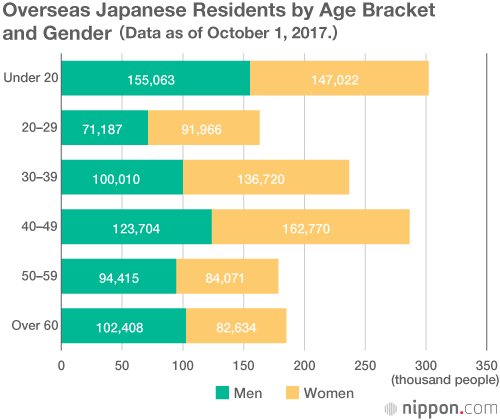
Record Number of Japanese Living Overseas
Society- English
- 日本語
- 简体字
- 繁體字
- Français
- Español
- العربية
- Русский
According to statistics of the Ministry of Foreign Affairs, 1.35 million Japanese citizens were living overseas as of October 1, 2017, a year-on-year increase of 13,493 people or 1.0%, marking the highest number since statistics were first kept in 1968. Around 765,000 more Japanese are residing abroad than in 1989, a 2.3-fold increase. Over the past five years alone, there has been an increase of 7.4%, or 93,707 people.

Japanese overseas residents include those who are living abroad on a long-term but temporary basis as company employees or students, and those who are permanently based in a foreign country. The long-term residents numbered 867,820 as of October 1, 2017, accounting for 64% of all overseas residents; this was a year-on-year decrease of 2,229 people or 0.3%. The remaining permanent residents numbered 484,150, a year-on-year increase of 15,722 or 3.4%. (Figures were not released regarding those living in Afghanistan, Iraq, and Syria due to security concerns.)
Since 1985, North America has been the most popular region for overseas Japanese residents, with 37% of them now living there. This is followed by Asia at 29% and Western Europe at 16%. Those three regions account for around 80% of all residents. The United States topped the list of countries where Japanese are living, with 32% of all residents, followed by China at 9.2%. The next most popular nation of residence was Australia at 7.2%, followed by Thailand at 5.4%, Canada at 5.2%, and Britain at 4.7%. The number of Japanese residing in China peaked in 2012 and has been in decline ever since. The number of Japanese in Brazil has also been in decline since 1976 and currently ranks seventh overall. Countries that saw significant year-on-year increases in Japanese residents included the Netherlands and Belgium, as well as the booming Southeast Asian economies of Cambodia, Myanmar, and Vietnam,

People under 20 or in their forties were most prevalent among overseas Japanese residents, at 22% and 21% of all residents, respectively, followed by thirty-somethings at 18%, those 60 or older at 14%, those in their fifties at 13%, and twenty-somethings at 12%.
Overall, 48% of the residents were men and 52% were women. The number of men increased 0.7% year-on-year, while women increased by 1.3%. Since 1999, women have outnumbered men among overseas residents. Women are predominant among those in their twenties, thirties, and forties, whereas men are more common among those under 20 or 50 and older.
